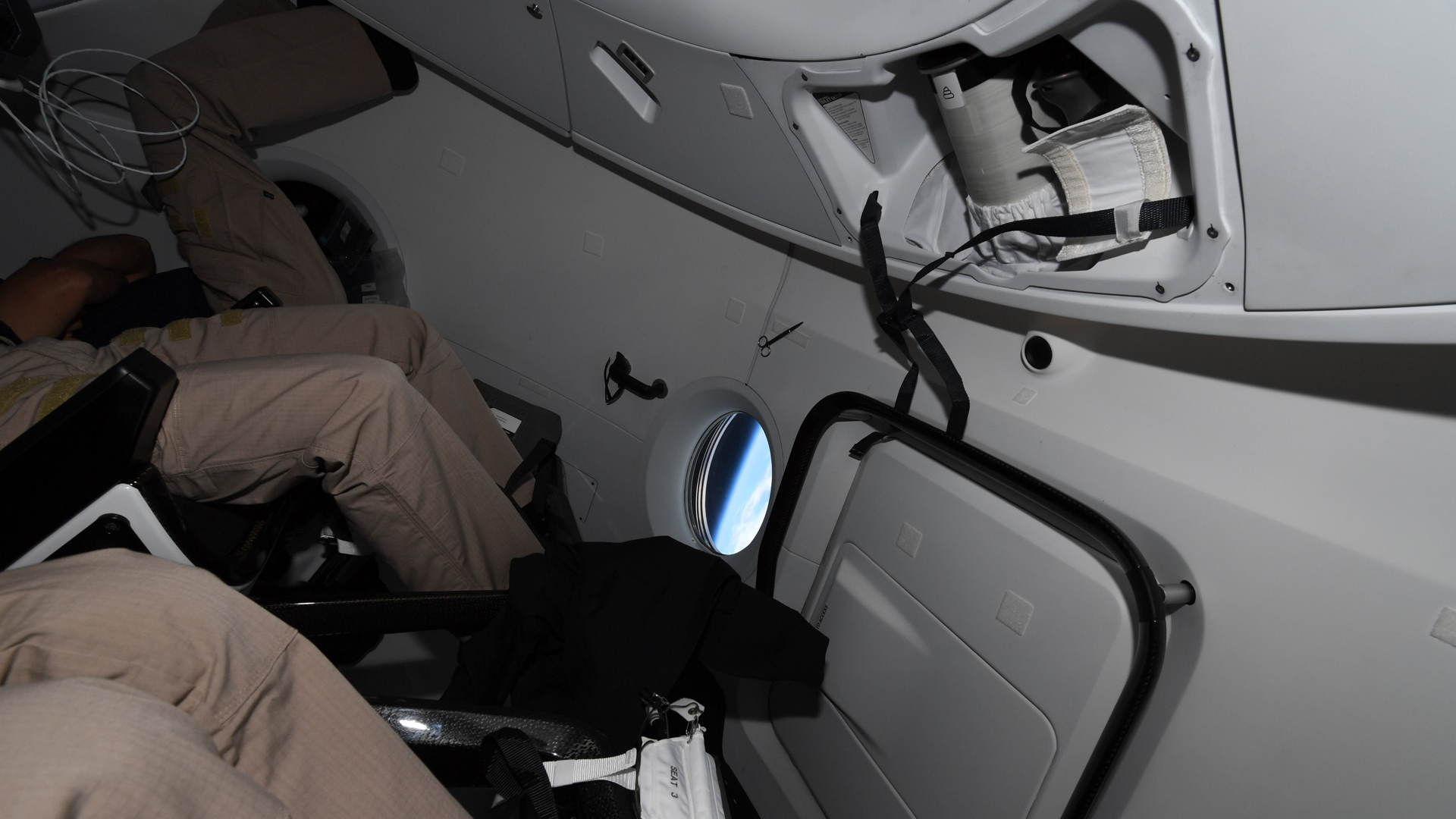
SpaceX's newest Crew Dragon capsule will test out some tweaked toilet tech when it lifts off for the first time this weekend.
The spacecraft, named Endurance by its four-astronaut crew, is scheduled to launch early Sunday morning (Oct. 31), kicking off SpaceX's Crew-3 mission to the International Space Station for NASA.
Endurance differs from SpaceX's two other named Crew Dragon capsules in a small but important way — it has a toilet system that's been revamped to prevent urine leaks in space.
Live updates: SpaceX's Crew-3 mission to the space station for NASA
Such leaks occurred on the most recent Crew Dragon flight, Inspiration4, which sent billionaire Jared Isaacman and three other private citizens to Earth orbit last month aboard the capsule Resilience. Post-landing inspections revealed that a tube hooked up to a toilet storage tank had popped loose during the three-day flight.
The unattached tube "allowed urine to not go into the storage tank but, essentially, to go into the fan system," Bill Gerstenmaier, vice president of build and flight reliability at SpaceX, said during a news conference on Monday (Oct. 25) after Crew-3's flight readiness review (FRR) concluded.
Following that revelation, SpaceX and NASA wondered if a similar issue had affected the Crew-2 mission, which arrived at the space station in April and is scheduled to wrap up next week. So astronauts on the orbiting lab checked out Endeavour, the Crew Dragon used for Crew-2, and found some signs of urine leakage in that capsule as well, Gerstenmaier said.
Get the Space.com Newsletter
Breaking space news, the latest updates on rocket launches, skywatching events and more!

The leaks don't seem to be a huge deal. The two crews who flew aboard those capsules didn't notice the issue during their flights, and analyses suggest that Endeavour didn't suffer corrosion damage that could complicate its return to Earth, Gerstenmaier said (though a bit more work needs to be done here on the ground to firm up that latter conclusion).
Still, SpaceX decided to take preventative measures ahead of its next astronaut flight, because urine leakage is generally something to avoid.
"For Crew-3, we've fixed this problem in the tank by essentially making an all-welded structure with no longer joints in there that can come unglued and become disconnected," Gerstenmaier said.
NASA is still vetting that change, though approval seems likely.
"We had a good review today," Joel Montalbano, NASA's ISS program manager, said during Monday's post-FRR news conference. "There were no surprises today. Everybody walked in today with understanding the mission, and understanding the work that needs to happen."
SpaceX holds a multibillion-dollar NASA contract to carry agency astronauts to and from the space station with Crew Dragon and the company's Falcon 9 rocket. As its name suggests, Crew-3 will be the third operational mission SpaceX flies under that deal. The company also launched a two-month crewed test flight to the orbiting lab, called Demo-2, in the summer of 2020.
Boeing holds a similar contract with NASA's Commercial Crew Program. The aerospace giant has not flown astronauts yet; its Starliner capsule first must ace an uncrewed test flight to the space station. Starliner took a crack at that mission in December 2019 but suffered some glitches and got stranded in the wrong orbit. Boeing is gearing up for try number two in the first half of 2022.
Mike Wall is the author of "Out There" (Grand Central Publishing, 2018; illustrated by Karl Tate), a book about the search for alien life. Follow him on Twitter @michaeldwall. Follow us on Twitter @Spacedotcom or Facebook.
Join our Space Forums to keep talking space on the latest missions, night sky and more! And if you have a news tip, correction or comment, let us know at: community@space.com.

Michael Wall is a Senior Space Writer with Space.com and joined the team in 2010. He primarily covers exoplanets, spaceflight and military space, but has been known to dabble in the space art beat. His book about the search for alien life, "Out There," was published on Nov. 13, 2018. Before becoming a science writer, Michael worked as a herpetologist and wildlife biologist. He has a Ph.D. in evolutionary biology from the University of Sydney, Australia, a bachelor's degree from the University of Arizona, and a graduate certificate in science writing from the University of California, Santa Cruz. To find out what his latest project is, you can follow Michael on Twitter.









